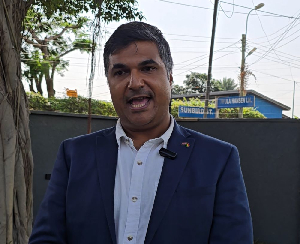Mexico Reignites Crusade for Quality in Health Care
This week, Mexico’s Minister of Health, Hon. Mercedes Juan, and the National Academy of Medicine under the distinguished patronage of its President, Dr. Enrique Ruelas, invited various international experts to share global perspectives on planning a national quality strategy at a summit called to take stock and raise the stakes after 12 years of a deliberate crusade for improved health care.
Mexico’s infant mortality rate of 12 deaths per 1000 live births is low compared to Ghana’s 50. Mexico’s child mortality stands at 16 per 1000 live births compared to Ghana’s 76, while maternal mortality stands at 22 per 100,000 live births compared to Ghana’s 350. For a massive Mexican population of over 100 million people compared to our 24M – the size of Mexico City alone – this is no mean feat!
In 2000, the Mexican government launched an ambitious agenda to improve quality in health care under Health Minister Julio Frenk, current Dean of the Harvard School of Public Health. Enrique Ruelas, our host, was at the time Vice Minister of Health in charge of a redesigned portfolio of Quality and Innovation with direct oversight over the strategy’s implementation. This high-profile intervention was aimed at complementing the country’s push for universal health coverage for its people. By December 2012, almost 50 percent of people living in Mexico had some form of health insurance coverage. More significantly, this translated to “almost 100 per cent of the total population that lacked financial protection in health before the reform.”
According to Ruelas et al., this crusade was operationalized along the following concepts and principles: “ethical platform for health care providers and patients; an organizational re-design of the federal Ministry of Health (MoH) …; a quality measurement system; a major training component for health care professionals on quality improvement tools (QIT); specific quality improvement actions; an accreditation system for public health care facilities; financial incentives for health care organizations to implement quality improvement initiatives; a national quality award for health care organizations; and the participation of service users and citizens in monitoring the quality of health care in public facilities.”
What did the Mexicans specifically do in 2000? First, the incoming President mandated a team to propose a national quality improvement strategy which was subsequently integrated into the National Health Programme. Second, the overarching aim of this national quality strategy developed through broad consultation was clearly communicated –that “quality would be explicitly recognized as an important value within the culture of health care organizations, and evidence of improvement would exist throughout the system and perceived by patients and by the general population.” Third, specific actions grouped into ten components were outlined to be implemented by a national steering committee under the Vice Minister of Innovation and Quality and supported by doctors in charge of all public hospitals.
Fourth, 17 whole system quality indicators were used to regularly track the effect of interventions on quality and feedback promptly provided to “the regular meeting of the National Health Council, the organization that gathers the 32 state ministers of health under the chairmanship of the federal minister of health.” Each of these states had its own committee for ensuring quality health care with representation from health professionals. It was chaired by the State Minister of Health.
An ethical platform was established through the introduction of relevant patient and provider charters with the support of professional associations and patient groups. The National Quality in Health care Award and financial support to facilities implementing successful quality improvement initiatives were introduced as incentives. Additionally, various processes including patient safety initiatives were standardized across the health care system. Finally, they formed Citizens’ Quality Councils which allowed trained volunteers from civil society to work collaboratively with providers to assess facilities and responsiveness using checklists.
This week, after critical self-reevaluation, Mexico offered the platform to 13 international experts to focus their experience sharing on five out of nine building blocks of a national quality strategy as per the framework shared by Prof. Sheila Leatherman, Fellow of the Institute for Healthcare Improvement (USA). The “all teach, and all learn” approach was rich: from USA and Ecuador came leadership and prioritization, from Scotland came lessons on active engagement of health professionals, from the Netherlands came lessons on data/analytics, public reporting, and transparency, and from Ghana came scaling up innovations and building capacity in quality improvement.
The takeaways for Ghana are myriad, especially given our own push for universal coverage through the National Health Insurance Scheme (NHIS). Ghana has not fared badly; 60% NHIS coverage, Maternal and Child Health indicators moving in the right direction, and discrete interventions with a bearing on improving quality health care. However, I see no deliberate, high-profile, and coordinated national strategy spearheaded by the Hon. Minister of Health that links policy to frontline professionals and civil society to improve the quality of health care as a complementary feature to the necessary fight for universal coverage. To this, I will add that it is not absolutely clear to me at this stage what the government’s driving passion in health is. What three things do President Mahama and the honorable health minister want to be remembered for at the end of four years – accelerating achievement of MDGs, universal coverage, national quality strategy, improved mental health care, better management of non-communicable diseases (hypertension, diabetes, obesity, cancers etc.), massive investment in infrastructure, harmonious industrial relationships with and among professionals?
As succinctly phrased by IHI’s Maureen Bisognano, it is time for the global public health community to reflect and act not just on universal coverage, but universal quality.
Sodzi Sodzi-Tettey
Sodzi_tettey@hotmail.com
www.sodzisodzi.com
19th July, 2013
Opinions of Thursday, 15 August 2013
Columnist: Sodzi-Tettey, Sodzi














